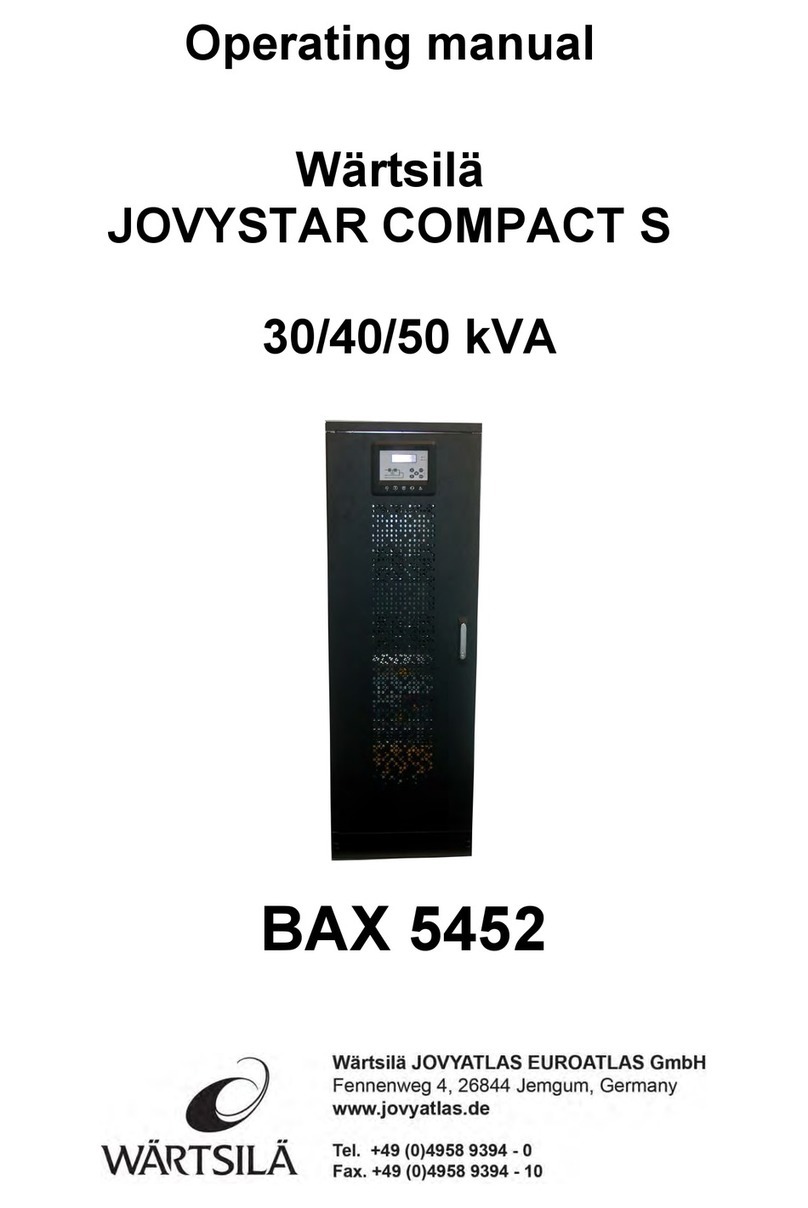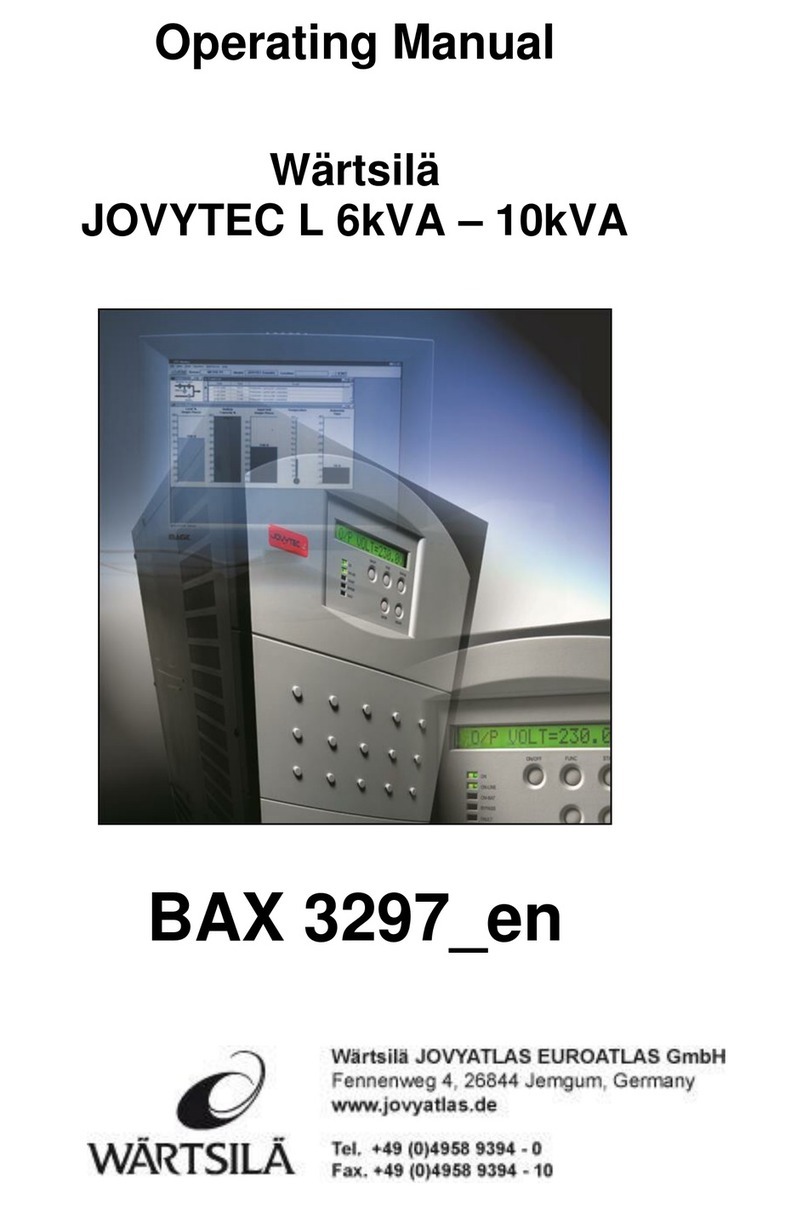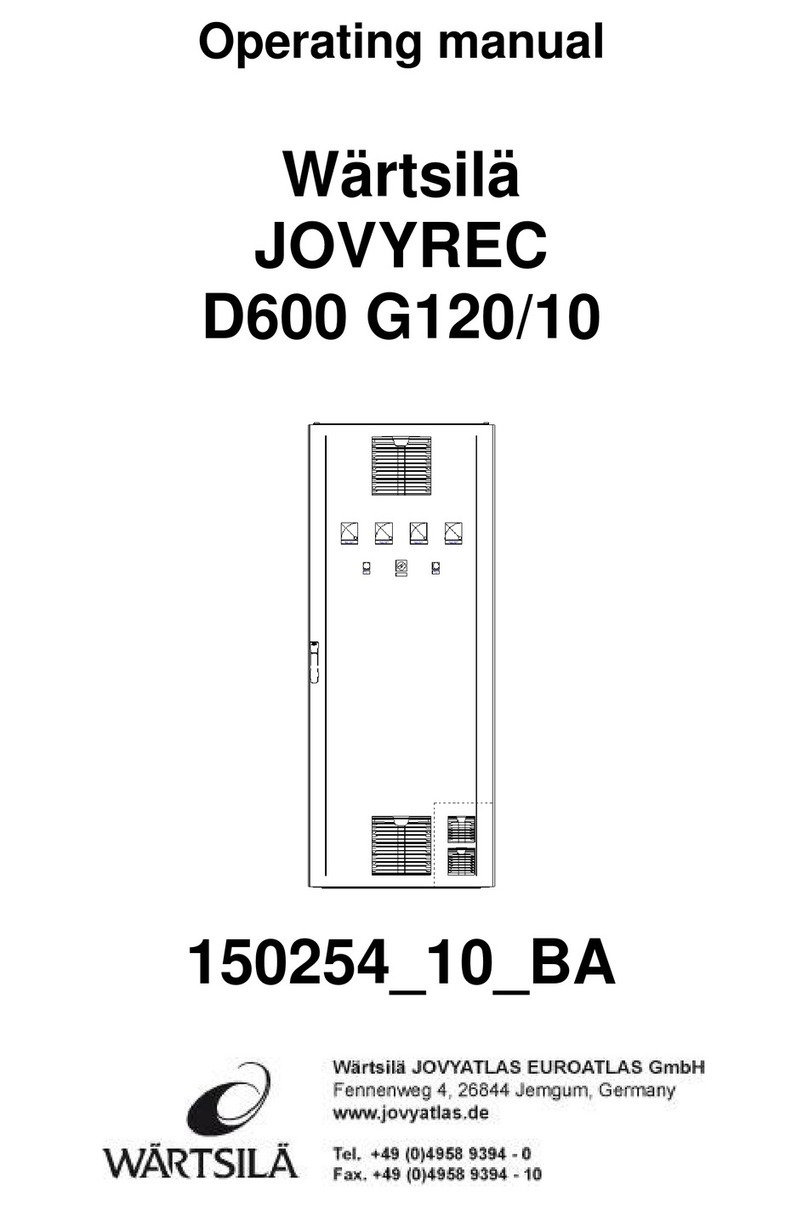
Wärtsilä JOVYSTAR –DELTA 40 –150kVA BAX 4647E - 7 -
2.1 Description Of The System
Congratulations for chosen a UPS out of the JOVYSTAR series! This type of static UPS incorporates the latest state of
technology in power electronics and digital signal processing. The UPS offers the optimal solution for problems in power
supply of computer-systems.
UPS of this series are capable to communicate with different computer operating systems through a standardized
RS232-interface. The necessary software as well as additional hardware like SNMP-Agent, MODEM etc. for remote
control of the UPS is available as an option.
JOVYSTAR UPS are real online systems (UPS-classification VFI SS 111 acc. IEC 62040-3), which prevents the at-
tached loads from mains disturbances like spikes, blackouts and voltage variations. The products are screened by an
effective quality management system. Therefore the JOVYSTAR offers a perfect solution for various power supply prob-
lems.
The reliability of the product is our major goal since over 60 years of experience in secured power supply and tech-
niques.
The scope of this manual is to describe the UPS and to guide the installer and the user through the correct installation.
The installer and the user will have to read this manual with care and attention and correctly carry-out the instructions
provided, especially those relevant to security according to the local standards and regulations.
NOTE:
The manufacturer declines all responsibility for damages to people or equipment deriving from non-
fulfilment of the instructions mentioned in this manual.
2.2 Why Using A UPS?
The reliable power supply is one of the major issues when installing computer-based process controlling systems. The
main reasons of all disturbances are:
- Spikes, produced by switching devices in the mains distribution
- High frequency superposition caused by welding machines, fluorescence radiation, copy machines and other,
- Voltage variations, due to load variations of big inductive consumers, such as lifts, transformers, machines
and others,
- Voltage breakdown, due to disturbances in the mains,
- Frequency variations, caused by using separate power supply units.
The range of disturbances for the attached loads begins with data errors or storing-loss and extends to hardware failure
or even production blackouts. Therefore the quality of power supply is an important factor for the reliability of electronic
data processing equipment or any other sensitive loads.
The best solution for a secure and safe power supply of critical loads is the use of an Uninterruptible Power Supply
(UPS). The UPS:
- Generates a constant voltage supply and frequency,
- Filters, respective suppresses mains disturbances down to a negligible value,
- Guarantees an uninterruptible power supply of the attached loads during a mains
failure for a specified period.
The UPS of the series JOVYSTAR is a system, is being connected between the mains and the load. It always guaran-
tees a secure power supply to the load over a specified period of time. In comparison to conventional power sources
(mains, motor aggregates, generators) the main advantages of the JOVYSTAR series are as follows:
-Optimal quality of the output voltage,
-Prevention from spikes, superposition, transient over-voltages etc.,
- Prevention from voltage variations and mains failures,




































